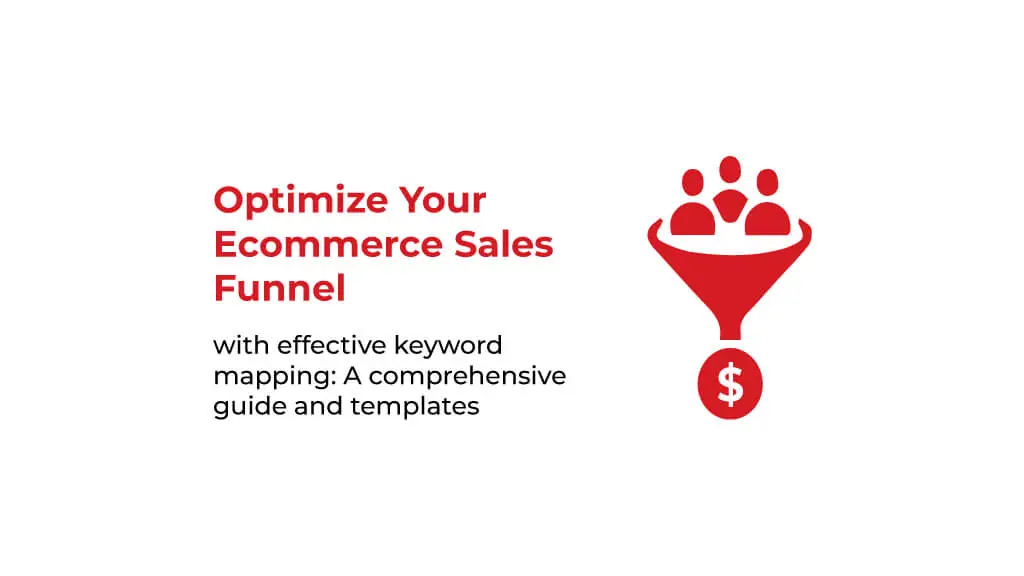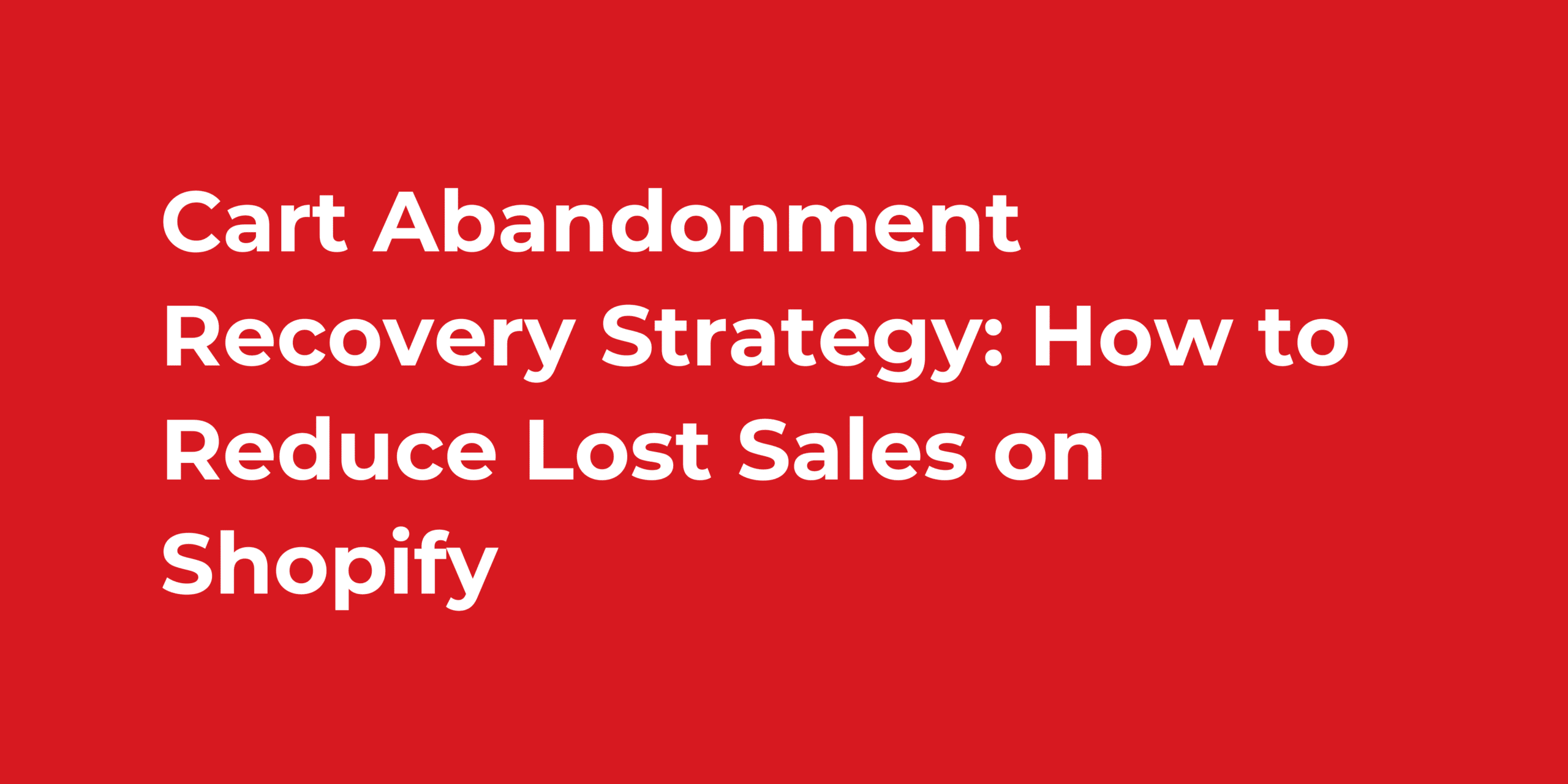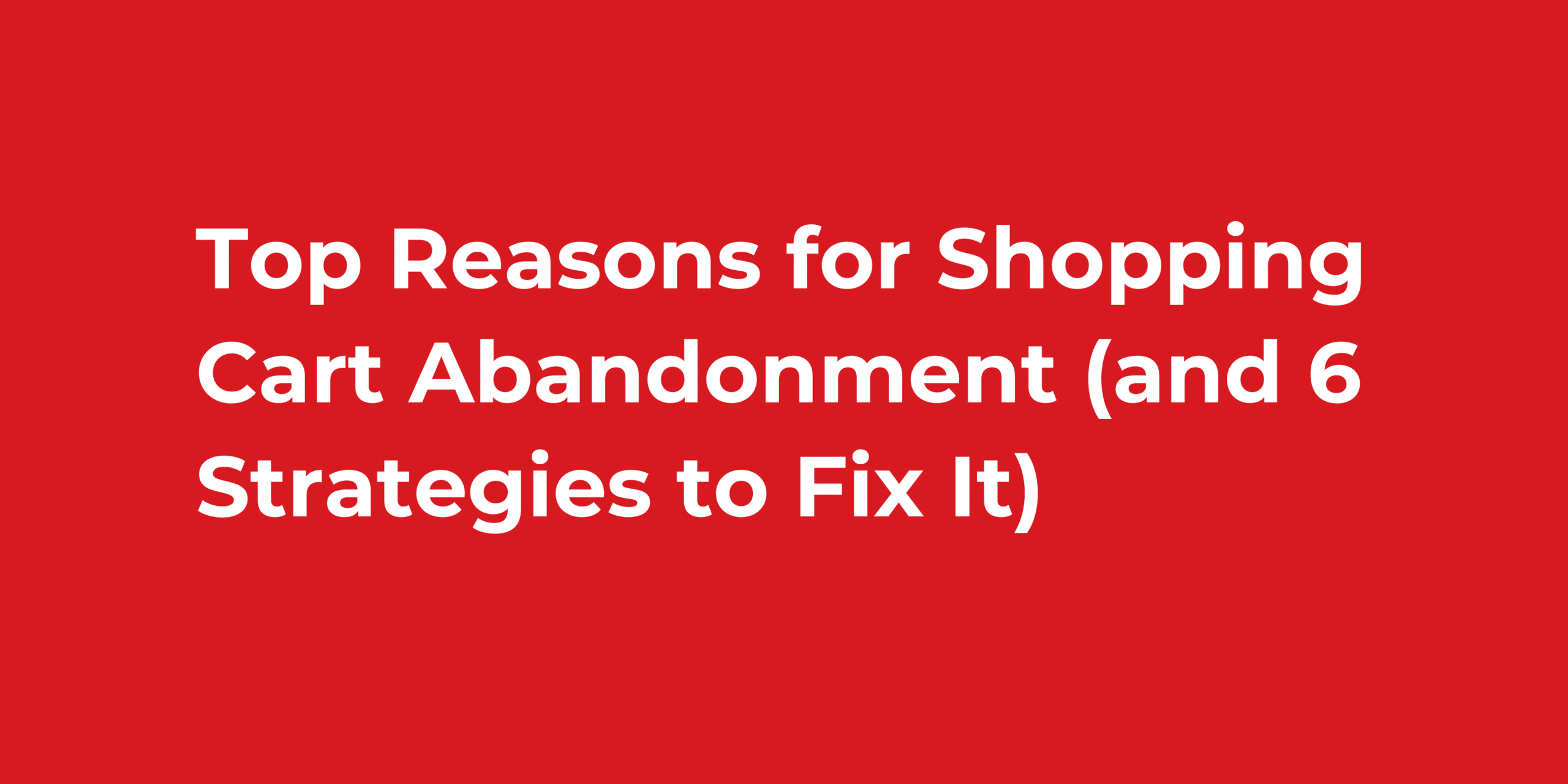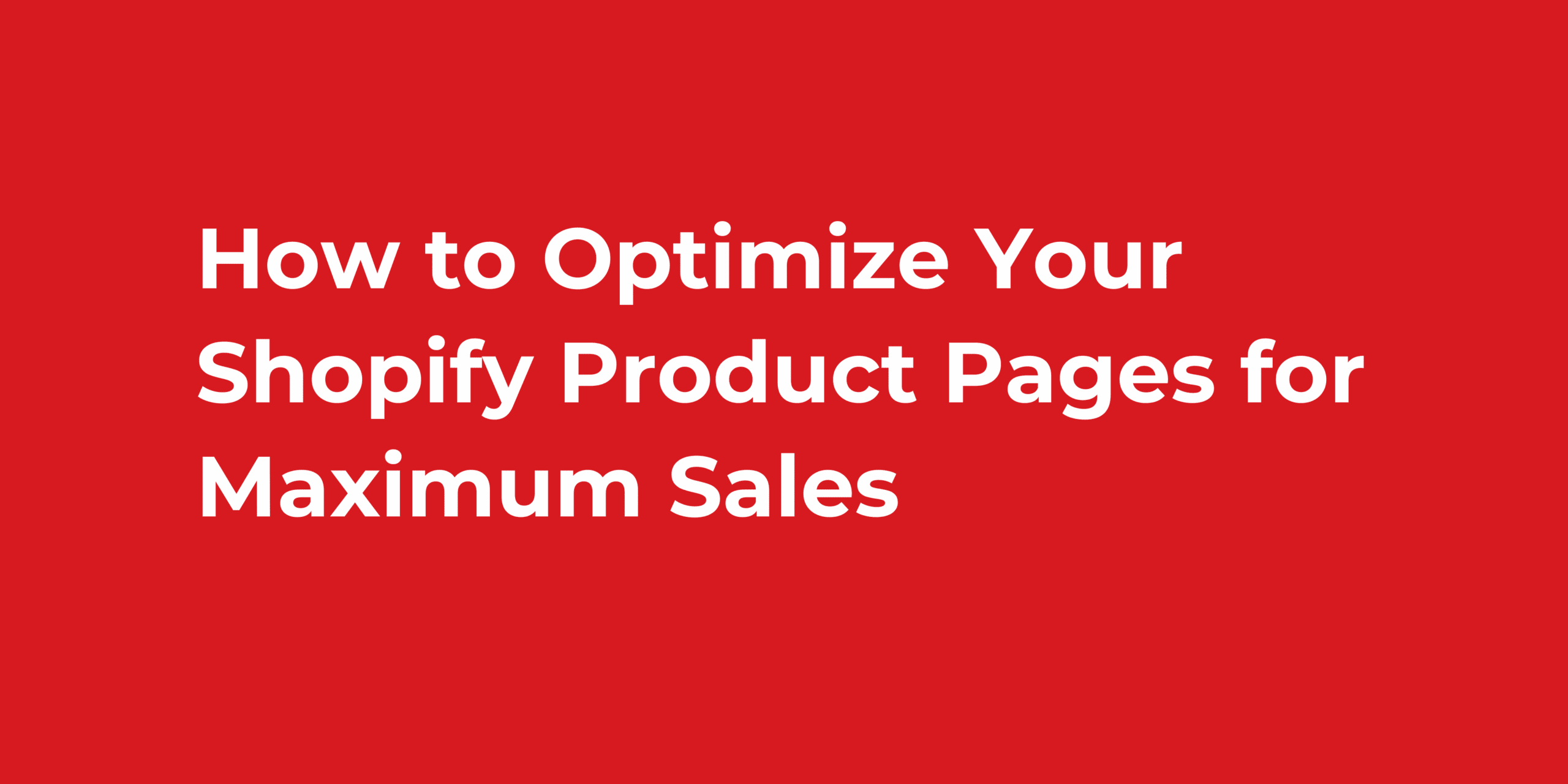When we shop at a market, we see different types of signs. Some signs describe the location of a specific shop, and after entering the shops, you can see different labels such as “discount,” “50% off,” “low prices,” and “buy one, get one free.”
All these signs motivate you to buy the products from that shop. Keywords in e-commerce stores play the role of those labels. That’s why your e-commerce website needs to have a keyword map.
A keyword map describes the locations of different keywords on your website. From the first look to the buying stage, customers are motivated by certain keywords, which leads to a successful shopping experience.
These keywords also help your website rank on the search engines. They match the search intent of your target customers, and hence, your website appears more in search results.
This blog focuses on the importance of keyword mapping for SEO and how to use it to improve sales flow.
E-commerce sales are greatly affected when specific keywords guide your website visitors through your website. Read the blog and learn strategies for keyword mapping affecting your e-commerce business.
What is a keyword map in e-commerce?
Keyword mapping just means placing specific keywords on different pages of your website. It is basically keyword organization, where every page on your site targets specific terms.
A keyword map is important for digital marketing and SEO to ensure people find your site online using a particular search term. This simply means that your site can rank higher on search results pages by associating the right keywords with the right page.
A keyword map thus aligns keywords with what customers seek at every stage of their shopping journey. In this way, someone looking for “best skincare for dry skin” is just thinking about buying a product, while if someone searches “skincare at best prices,” they are a lot ahead in their shopping journey.
This keyword organization can guide visitors through your site and lead them toward a purchase.
Get your Keyword Map ready-to-use template by Ahrefs here;

Advantages of a keyword map
Here are some advantages of a keyword map:
- Better SEO and Search Visibility: Keyword mapping for SEO is very important, as more people see your products because your pages are displayed higher in the search engine.
- Enhanced User Experience: Keyword maps give the appropriate information at each point of a journey, thus facilitating the journey for customers.
- More Conversions: Keywords will guide your customers through your website, increasing the conversion rate and, hence, more e-commerce sales.
- Better Targeting and Resource-Asset Allocation: It allows you to target the right keywords that matter at different points of the E-commerce sales funnel, and your content and marketing efforts will thus be much better targeted.
In short, keyword mapping for SEO is a very powerful tool in e-commerce. It can connect customers at the right time to help them find what they’re looking for and encourage them to purchase.
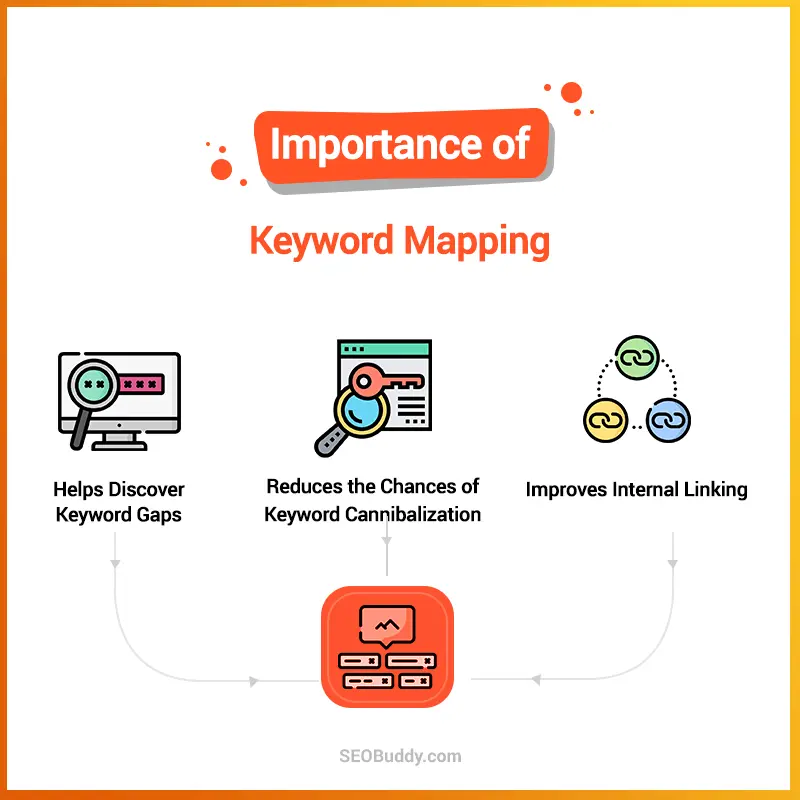
What is a sales funnel in e-commerce?
The e-commerce sales funnel is like a path created to guide a potential customer, such as a website visitor, from discovering your brand to finally making a sale.
This funnel is important because it helps align your marketing and content efforts with the customer’s journey.
The better you understand your customers’ feelings at every point of their purchase, the better and more user-aligned your efforts will be to convince them.
Some people are hesitant before buying something even if they need it, some people do extensive research before buying even a single shirt, while some people care less about quality and just buy the product because they are in a hassle.
All types of consumers might come to your website, so you need to prepare your e-commerce website for all of them. A keyword map plays this role effectively.

The sales funnel is usually divided into stages that align with the process of buyer decisions. Therefore, customers will have different needs, questions, and intents at each stage of the sales funnel, meaning the content and keywords must be adapted accordingly.
A successful keyword map can create content matching customers’ needs. These keywords will also help you appear in search results.
Suppose you align your keywords to the different stages. In that case, you will be able to connect with customers at the right time and enhance the possibility of their staying on your website until they make a purchase. This will make your E-commerce sales funnel effective, smoother, and more engaging for customers.
Now that you might have figured out a sales funnel, this guide focuses on three main stages: Awareness, Consideration, and Decision.
Keyword map for each stage of the sales funnel
The e-commerce sales funnel has three stages of the consumer journey. Here are the details of these stages.
1- Awareness stage
Objective:
To bring new visitors or first-time visitors to your brand.
Customer Intent:
There is research and exploration involved in the process here. They want general information about something that will them about the basic features of this product.
Keyword Types:
Keywords need to be broad and cover information. Find the most used high-volume keywords related to general questions or long-tail keywords that are specific and less competitive. These can include “how-to” keywords and question-based phrases. Include question-based keywords in your keyword map.
Content Ideas:
- Blog posts and guides, as well as “how-to” articles, will help answer common questions. For example, you might write, “What is vegan leather?” or “How to style leather jackets.”
- Use educational infographics or simple explainers, making information easy to understand
- SEO optimization includes clear heading titles, like H1 tags, and a meta description that will capture attention.
Example Keywords
- “Types of leather jackets”
- “Best organic skincare ingredients”
Goal:
Usually, the goal in this stage is to create awareness and supply useful knowledge to visitors so that they can get to know your brand and then move to further stages later.

2- Consideration stage
Objective:
At the consideration stage, you tell your visitors about your products and make them interested in what you offer. You help them feel confident about considering your products as actual options.
Customer Intent:
Customers are comparing their options and comparing them with other brands. They would like to know the differences between similar things and see the pros and cons of each so they can make an informed choice. Using a special keyword map at this point makes a difference and prevents your customer from bouncing off to other brands.
Keyword types:
Target mid-funnel keywords that combine informational and buying intent. Examples include keywords focused on comparisons, reviews, and really detailed guides. Use special types of keywords in keyword mapping for SEO.
Content ideas:
Product Comparison Guides:
Publish blog posts on comparison between similar products, like “Leather Jacket vs. Bomber Jacket: Which is Best for Winter?” This helps the customer understand the benefits of different product lines.
Buying Guides and Tips:
Publish posts such as “How to Pick Up the Correct Laptop for Work and Gaming” or “Top Attributes to Look out for in a Digital Camera.” These informative pieces help make the buying process easier for the customer and it will automatically enhance the e-commerce sales funnel.
Reviews and Testimonials:
Add real customer reviews and testimonials on category pages and product pages to build trust. Maybe a skincare firm has testimonials on the page highlighting “Organic vs. Conventional Skincare Products.”
Expanded Category Pages:
For a retailer that sells shoes, the category page “Best Running Shoes for Various Terrains” could answer all the repetitive questions, and then the page could link to very specific shoes that would help the customer meet their needs.
Sample Keywords:
- “Best leather jackets for autumn
- “Organic vs. conventional skincare”
- “The best digital cameras under $500”
Goal:
The goal here is to generate interest and guide the user through the decision-making process. This type of content drives users closer to a decision and keeps them interested in your brand. This helps boost your e-commerce sales a lot.

3- Decision stage
Objective:
This is the last and most important stage in the consumer journey in the e-commerce sales funnel. Now, when a person has decided to purchase from you, he needs some additional motivation to order your product. Specific keywords do this.
Customer intent:
At this time, people also want to ensure that their decision is correct. They ask for discounts, free shipping, or guaranteed offers.
Keyword types:
Use high-intent, transactional keywords that indicate someone ready to convert. These are keywords with terms such as “buy,” “order,” “discount,” and product-specific branded terms. These types of words in the keyword map will help in conversions.
Content ideas:
Optimized product pages:
Every product page should contain strong, compelling copy, good-quality images, and CTA. An example of an electronics store would include CTAs like “Add to Cart” or “Get Free Shipping Today on All Orders Over $50” to induce purchases.
Price discount and temporal offer:
Make a landing page or banner for promotions that say, “Buy Leather Jackets with Free Shipping” and “Limited Time: 15% Off All Organic Skincare Products.” This will entice hesitant customers to purchase the product quickly due to the sense of urgency.
Streamlined checkout and cart pages allow the user to simplify the buying process. For instance, offering the option for guest checkout for first-time users can make it relatively easy for them to make a successful purchase.
Example keywords
- “Buy leather jackets online”
- “Discount on organic skincare products”
- “Order gaming laptops with free shipping”
Goal:
The goal of the whole process is to clarify your customers’ doubts and ensure that they are making the right decision.

How to create a keyword map strategy for your sales funnel
Here are the steps to create an effective keyword map for your e-commerce website.
Step 1: Keyword research
You can find a lot of keywords for keyword mapping for SEO. Use keyword research tools, Google Keyword Planner, SEMrush, and Ahrefs. Try to find the right keywords at every stage of the sales funnel. It will help you know what people are looking for at each step.
Step 2: Keyword categorization based on funnel stage
Organize your keywords according to what the customer needs at each stage. For example, gather informative keywords for the Awareness stage, comparison-focused keywords for the Consideration stage, and buying-focused keywords for the Decision stage. Then, use those keywords on the most suitable pages or types of content. This is how you can make a successful keyword map.
Step 3: Create your content
Produce content for each stage. In the Awareness stage, you want blog posts or “how-to” guides. For the Consideration stage, provide product comparisons or buying guides. Use your keywords on your product pages at the Decision stage to drive purchases.
Step 4: Track it
Monitor keyword performance through Google Analytics. It will show which of your keywords is driving traffic and helping your conversion, allowing you to make appropriate changes.

Conclusion
We have discussed the importance of keyword maps in the e-commerce journey. It would be best to target different keywords that match the user’s intent from the awareness stage to the decision stage.
Keyword mapping for SEO greatly helps e-commerce businesses enhance their sales. This process can be done effectively if you know the feelings and sentiments of your website visitors.
Subscribe to our weekly newsletter to get crispy CRO tips and marketing strategies that win millions of qualified leads with minimal marketing spend.
FAQs
-
How to do keyword mapping for SEO?
A keyword map describes the locations of different keywords on your website. From the first look to the buying stage, customers are motivated by certain keywords, which leads to a successful shopping experience. These keywords also help your website rank on search engines. These keywords match the search intent of your target customers, and hence, your website appears more in search results.
-
What is the sales funnel for SEO?
The e-commerce sales funnel is like a path created to guide a potential customer, such as a website visitor, from discovering your brand to finally making a sale. This funnel is important because it helps align your marketing and content efforts with the customer’s journey. The better you understand your customers’ feelings at every point of their purchase, the better and more user-aligned your efforts will be in convincing them.
-
What are the tools for keyword mapping?
You can find a lot of keywords for keyword mapping for SEO. Use keyword research tools, Google Keyword Planner, SEMrush, and Ahrefs. Try to find the right keywords at every stage of the sales funnel. It will help you know what people are looking for at each step.
-
What is the first step in sales funneling?
Awareness is the first stage in the buyer’s journey. To bring new visitors or first-time visitors to your brand. Keywords need to be broad and cover information. Find the most used high-volume keywords related to general questions or long phrase long-tail keywords that are specific and less competitive. These can include “how-to” keywords as well as question-based phrases. Include question-based keywords in your keyword map.
-
Why keyword mapping?
Keyword mapping for SEO is very important as more people get to see your products because your pages are displayed higher in the search engine. Keyword maps give the appropriate information at each point of a journey; thus facilitating the journey for customers. As keywords will guide your customers through your website it will increase the conversion rate and hence more E-commerce sales.
